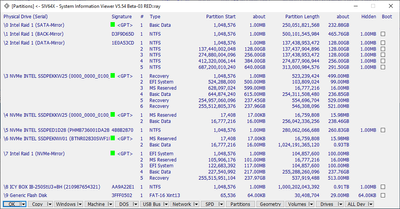Reply 20 of 49, by Jo22
- Rank
- l33t++
jmarsh wrote on 2020-11-25, 07:58:FAT16 has several possible partition table IDs: 04: FAT16, < 32MB 06: FAT16, >= 32MB 0E: FAT16, >= 32MB, using INT13 extensions […]
darry wrote on 2020-11-25, 00:33:There must be some slight difference between different partitioning/formatting tools that the FC1307A either likes or does not like . Offset from beginning of disk may be one of them or not .
FAT16 has several possible partition table IDs:
04: FAT16, < 32MB
06: FAT16, >= 32MB
0E: FAT16, >= 32MB, using INT13 extensions (CHS beyond 1023/16/63 limits).I would guess "FAT-16 Huge" would be the last one.
What about Windows NT?
Didn't it have some special flavor of FAT16/VFAT that supported long file names etc? 😕
"Time, it seems, doesn't flow. For some it's fast, for some it's slow.
In what to one race is no time at all, another race can rise and fall..." - The Minstrel
//My video channel//


